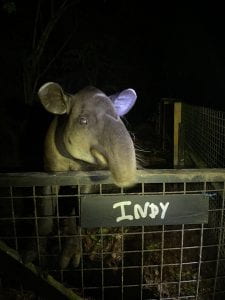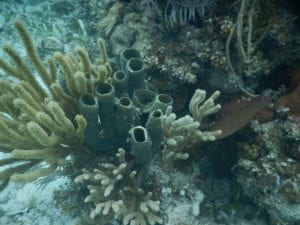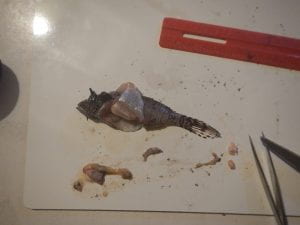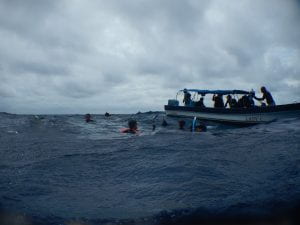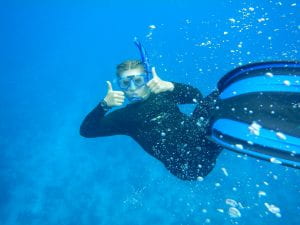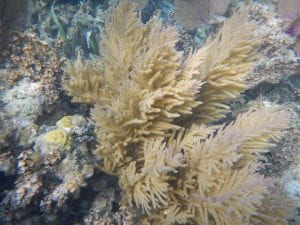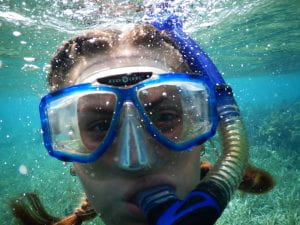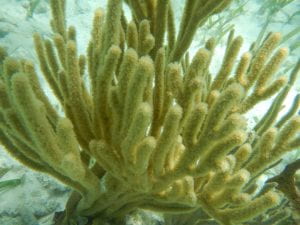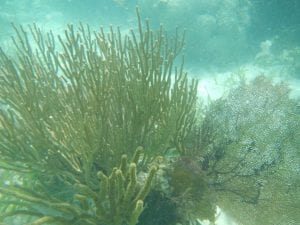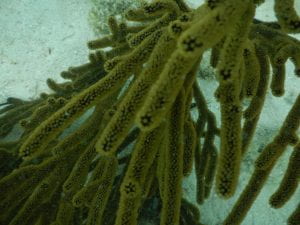After visiting the reef and rainforest, I have so many thoughts about the experience it would be impossible to sum them all up in one blog post, but here is my weak attempt to do so!
First, It was really cool being able to see how these ecosystems both resembled each other, and had aspects that were incredibly different from each other. One massive similarity is the nutrient availability. Both in the reef and the forest, nutrients needed for the main ecosystem builders (corals, trees, plants, etc.) are seemingly quite scarce. This is because the minute they become available they are taken up! This is reflected in the opportunistic nature of many of the flaura and fauna of the two ecosystems. In the rainforests, for example, epiphytes live in trees and are able to take in resources from falling leaves and debris (an uncommon thing where resources in the soil are more plentiful). Similarly, in the reef, stony corals thrive in low nutrient areas, and have adapted a host of symbiotic relationships to gain the energy and nutrients they do require. Another similarity, is the huge abundance of available niches and equal abundance of species to fill them. Both in the reefs and rainforest there are countless examples of species that have adapted to take advantage of the most specific niches. On the reefs, this could include all the small critters like sea urchins or hermit crabs that take over abandoned shells. In the rainforest this could include the Mexican Burrowing toad that uses leaf cutter ant nests to amplify its call. Also (don’t worry I’ll stop soon) both the rainforest and reef have vertical ‘zones’ where there is some crossover of species, but also many species that only occupy certain areas that are a specific distance away from the ground or sea surface.
While they have many similarities, there are also obvious differences. One that is interesting to me is the result that an increase in nutrients has on the two environments. Corals are very adapted to low nutrient environments, but in high nutrient environments they lose their competitive edge over algae and are killed out. This eventually may result in an alternative stable state for the ecosystem, where it is no longer a thriving coral reef ecosystem but rather a large patch of macro algae. However, in the rainforest, an increase of nutrients does not lead to the decline of trees or other plant species. This is also in part because nutrients enter the environment in different ways. In the rainforest, for example, an influx in nutrients wouldn’t necessarily coincide with a difficulty to photosynthesize (like it may on the reef if there is an influx in sediment that brings in the nutrients).
This course completely lived up to my expectations, as an amazing trip that has changed my outlook on biology and nature! I think the biggest change in my expectations of the course was in how it would affect my future plans/ideas about my career. Going into this course, I was unsure of if I wanted to pursue a career in bio research. After some of the experiences I had here (#1 being watching the snake/frog egg interaction) I am much more sure that this is what I want to do! I knew I was going to love the rainforest, but I didn’t realize just how many bites I would get from the Chiquibul bug (I.e. wanting to go back at least100x)!
For me, the best part of the class was being able to witness firsthand all of the cool things that I have been learning about in classes at Rice for the last 4 years. I felt like I was inside a David Attenborough documentary, which I basically was. Specifically, I really loved seeing antagonistic relationships and mutualisms in action! A sharp contrast, my least favorite part of the course was being devoured by insects almost constantly! However, as annoying as this was, it was well worth it for the wealth of amazing experiences I was able to have!
My 4 biggest takeaways/learning points:
- Reefs and Rainforests are able to support so much life with limited resources, as the resources are stored in the living things! Now this seems kind of obvious, but it was really cool slowly realizing that this is how such a seemingly nutrient poor landscape supports so much biodiversity.
- Your methods aren’t as good as you think they are! This is a bit of an overstatement, but by this I mean that there are lots of little things that you don’t think of until your methods are put to the test. My biggest takeaway from this is that it is always a good idea to do a preliminary test of your methods to work out issues and such before you start your larger project.
- Mutualisms are literally everywhere. Throughout the course we learned about a ton of mutualisms both on the reef and in the rainforest. Some examples; ants that live in and protect plants, stony corals and their photosynthetic symbiodiniaceae, leaf cutter ants and their fungus, the list goes on…. While there are tons of antagonistic relationships that are readily apparent, there are also an abundance of mutualism once you start looking.
- Termites taste like carrots… I mean c’mon who would have thought?!
Thanks to my profs and peers (and Nyala and Caio of course) for making my time in Belize so memorable!
– Ava

